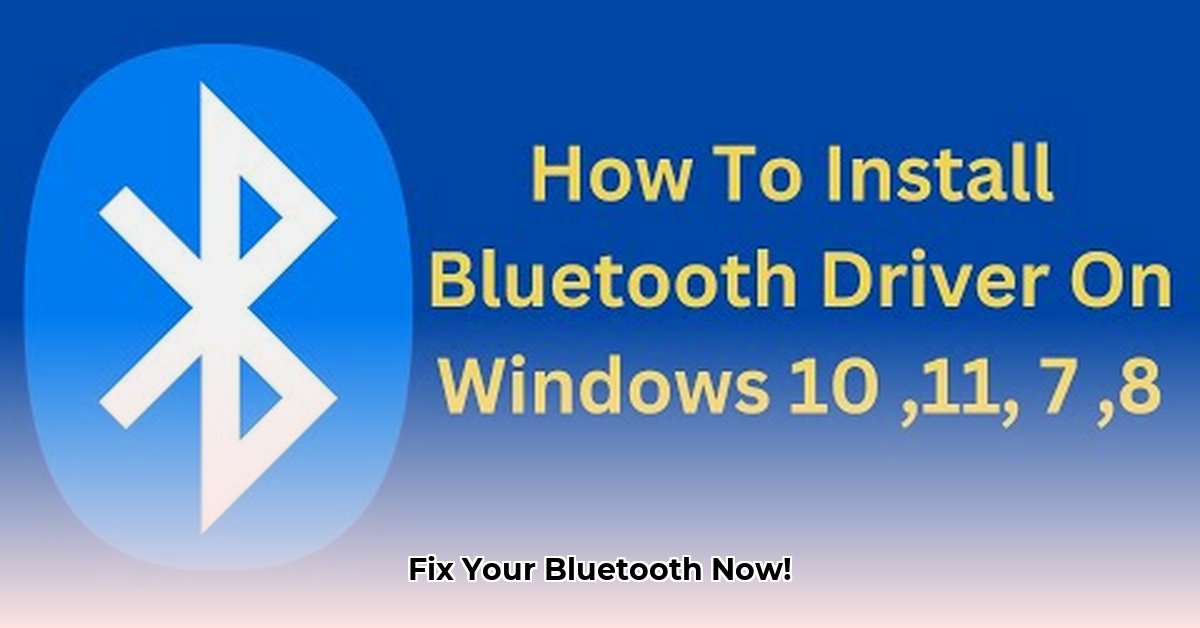
Getting Bluetooth working on your 32-bit PC can be surprisingly simple, but choosing the right driver is crucial. This guide compares generic and manufacturer-specific drivers, providing step-by-step instructions and troubleshooting tips for a seamless experience. We'll cover everything from installation to fixing common connection problems, ensuring your wireless devices work flawlessly.
Generic vs. Manufacturer-Specific Bluetooth Drivers: A Detailed Comparison
You have two primary options when it comes to Bluetooth drivers for your 32-bit PC: generic drivers available through Windows Update and drivers directly from your Bluetooth adapter's manufacturer. Each approach has its own set of advantages and disadvantages. Understanding these differences will help you make an informed decision.
Ease of Use and Installation
Generic drivers, often provided automatically through Windows Update, are incredibly easy to install. The process typically involves a few clicks and a system restart. Manufacturer-specific drivers, however, might require more steps, including downloading the driver from the manufacturer's website and manually installing it – more akin to building something from a kit than simply plugging in a pre-assembled product. This difference in ease of use is significant for users of varying tech-savviness.
Performance and Compatibility
While some users report marginal performance gains with manufacturer-specific drivers, particularly with unique features, this isn't consistently observed across all systems. Generic drivers usually provide sufficient performance for most standard Bluetooth applications. The main area of divergence lies in compatibility. Generic drivers offer broader compatibility with a wider range of Bluetooth devices. Manufacturer drivers, on the other hand, are precisely tailored to specific hardware, potentially leading to better compatibility with certain devices or advanced features.
Security and Risk
Downloading drivers from reputable sources is paramount. Generic drivers offered through Microsoft updates are rigorously tested and vetted, minimizing potential security risks. However, downloading manufacturer-specific drivers from unofficial sites introduces a greater risk of malware or corrupted files. Sticking to the official manufacturer's website ensures a secure download.
Support and Resources
Microsoft provides comprehensive support documentation and troubleshooting resources for its generic drivers. The availability and quality of support from manufacturers vary greatly, depending on the brand and the age of the hardware. Older hardware might have limited or outdated support. This disparity in support resources can significantly impact the user experience, especially when troubleshooting connectivity issues.
Step-by-Step Driver Installation Guides
Let's outline the installation process for both generic and manufacturer-specific Bluetooth drivers. Remember, creating a system restore point before any driver installation is a critically important preventative measure. (This allows you to easily reverse the changes if issues arise.)
Installing Generic Bluetooth Drivers
- Check for Updates: Open Windows Update (search for "Update" in the Start Menu).
- Install Available Drivers: Windows will automatically download and install any necessary Bluetooth drivers.
- Restart Your PC: Reboot your computer for the changes to take effect.
Installing Manufacturer-Specific Bluetooth Drivers
- Identify Your Hardware: Open Device Manager (search for it in the Start menu). Locate your Bluetooth adapter to find its manufacturer and model number.
- Visit Manufacturer's Website: Navigate to the support or downloads section of the manufacturer's website (e.g., Intel, Realtek).
- Download the Correct Driver: Locate the driver specifically for your 32-bit Windows version and adapter model.
- Run the Installer: Follow the on-screen instructions provided by the installer.
- Restart Your PC: Reboot your computer to complete the installation process.
Troubleshooting Common Bluetooth Connectivity Problems
Even with the correct drivers installed, you might occasionally encounter Bluetooth issues. Here's a systematic approach to troubleshooting:
- Restart Your PC and Bluetooth Device: A simple reboot sometimes resolves temporary glitches.
- Check Device Manager: Inspect Device Manager for any yellow exclamation marks next to your Bluetooth adapter, indicating a driver or hardware problem.
- Update or Reinstall Drivers: Try updating to the latest drivers or reinstalling your current drivers.
- Check Bluetooth Settings: Ensure your Bluetooth is enabled in Windows settings.
Key Takeaways and Recommendations
The choice between generic and manufacturer-specific Bluetooth drivers depends on your technical skills and needs. Generic drivers are readily available and offer a simple installation process. Manufacturer-specific drivers offer the potential for improved performance and better compatibility with specific devices and advanced features, but they might be more challenging to install and troubleshoot. Regardless of your choice, creating a system restore point beforehand acts as a safety net, allowing you to revert to a previous stable state if problems occur. For most users, starting with the readily available generic drivers from Microsoft is a reliable and easy solution.
⭐⭐⭐⭐☆ (4.8)
Download via Link 1
Download via Link 2
Last updated: Monday, April 28, 2025